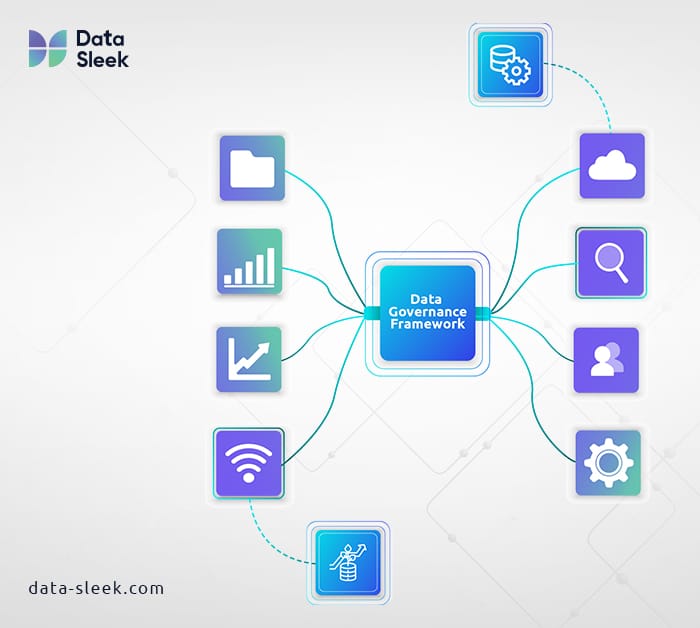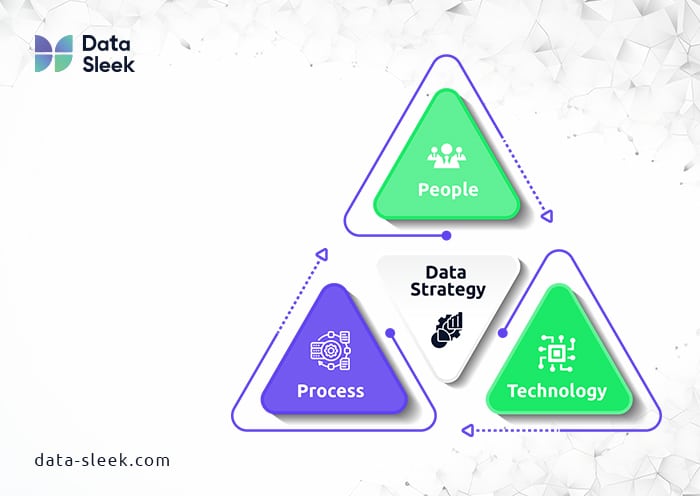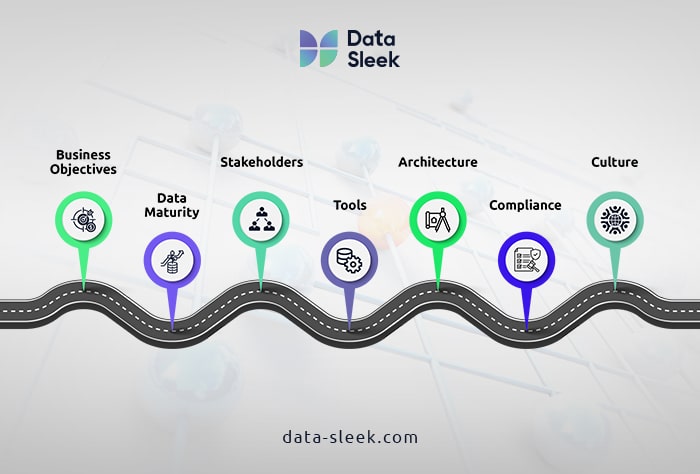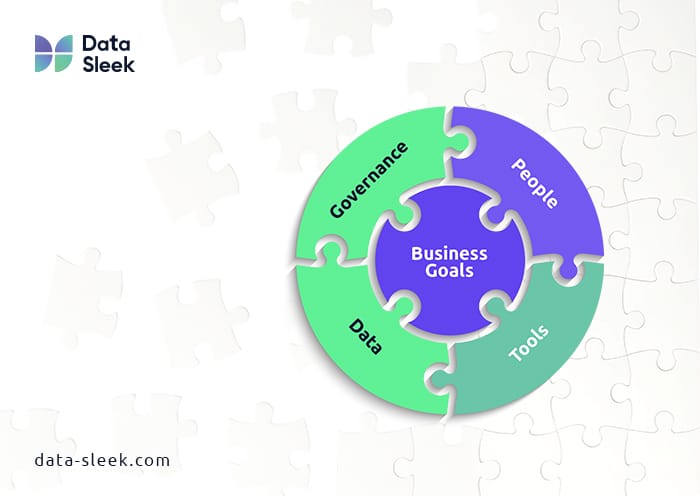Data is one of the most valuable resources for any modern business or organization. It enables informed decision-making, drives efficiency, and creates a competitive advantage. However, without proper data management, its value diminishes over time. In fact, stale, unstructured data can even become a costly liability.
Poor data management costs businesses an average of $15 million each year. While the majority of businesses and organizations say that data management is crucial to their operational efficiency, nearly half of them admit they lack a comprehensive data management strategy.
Companies that lack a solid data management strategy fall behind and miss out on key opportunities, further underscoring the importance of data management. So, in this guide, we’ll discuss data management strategies, what they are, what their key components are, and how to develop an effective data management strategy.
What is a Data Management Strategy?
A data management strategy is a comprehensive approach to managing an organization’s data through its lifecycle, from the moment it’s gathered or generated to processing, storage, and analysis. This long-term plan defines the technology, processes, people, and policies required to manage a business or organization’s data assets, ensuring that the data is secure, accessible, and reliable.
Modern organizations collect vast amounts of raw data from their clients and customers, which helps them provide a better and more optimized service and user experience. However, to make well-informed decisions backed by factual data, businesses have to make sense of that data and derive valuable insights.
As such, a strong data management strategy protects the organization’s data and ensures that it becomes a valuable asset that drives decisions, innovation, and operational efficiency across an entire organization.
Key Components of a Strong Data Management Strategy
A well-developed and strong data management strategy is composed of several key components that play a crucial role in how data is handled and used. Here are some of the most important components of a strong data management strategy:
Data Governance
Data governance involves establishing policies, standards, and clear roles within an organization that dictate how data is managed. As such, data governance lies at the very heart of every data management strategy.

Effective data governance also ensures that the data is accurate, secure, and compliant with regulations, and includes different protocols associated with audit mechanisms and risk mitigation.
Data Integration
Modern businesses and organizations gather and source their data from multiple different data sources and systems. The purpose of data integration is to ensure that the data gathered from different sources is consolidated into a unified view.
This allows said data to seamlessly flow across applications regardless of their underlying technology (interoperability) and makes it much easier to access and analyze by different teams. Most importantly, data integration enables and maintains data consistency across all departments within an organization, thus enabling better interdepartmental collaboration.
Data Quality Management
As its name implies, data quality management focuses on data quality, thus ensuring that the data is accurate, complete, consistent, and, most importantly, reliable. Data quality must be continuously monitored and assessed to ensure accuracy and reliability, so a good data quality management plan must also include measures for monitoring and improving the quality of data.
This also includes various tools that eliminate data-associated errors, such as duplicate data or incomplete records.
Metadata Management
Metadata is basically data about the data, and it provides critical context for understanding and using said data effectively. As such, metadata also requires well-thought-out and structured management, which involves organizing and maintaining information that pertains to content, structure, and relationships between different data sets.
Good metadata management practices enable teams to track data lineage (which shouldn’t be neglected) and ensure that the data is easily analyzed and understood by both tech- and non-technical users.
Master Data Management (MDM)
Master Data Management (MDM) ensures that the critical data entries, such as product information or customer data, are consistent and accurate across all of the organization’s systems, thus ensuring organization-wide data accuracy.
Security & Privacy Compliance
Data security focuses on protecting an organization’s data from unauthorized access, breaches, and cyber threats. It encompasses a range of different security disciplines, including data encryption, access control, firewalls, authentication, and regular audits.
Data privacy compliance, on the other hand, ensures that the data is collected, stored, and shared in accordance with laws and regulations.
Strategic Benefits of Data Management
Data is the gold of our century, and with proper management, it helps drive innovation and growth. Here are additional benefits of developing an efficient data management strategy:
Support for Decision-Making and Analytics
While data management strategies define how organizations handle data throughout the data lifecycle, data management is the execution of the data management strategy. Thus, adequate data management provides businesses with accurate, real-time information that drives better decision-making and allows analysts to predict market trends customer behavior, and to identify operational inefficiencies.
Business Agility and Operational Efficiency
Effective data management streamlines business processes by providing consistent, reliable, and accessible data across all departments within an organization. This reduces redundancies, accelerates workflows, and enhances collaboration between different departments.
Due to teams working more quickly, the organization becomes more agile and able to promptly respond to market changes and customer needs. This leads to an increase in operational efficiency, which further optimizes resource use and minimizes errors associated with poor data quality, effectively lowering operational costs.
Compliance and Risk Mitigation
With data privacy regulations becoming stricter by the day, businesses and organizations must ensure that their data management practices, as prescribed by their data management strategies, have secure data governance in place and adhere to all the laws and industry regulations pertaining to data handling. This helps avoid heavy fines and reputational damages associated with data breaches or inadequate use of data.
Having a well-defined data management strategy in place also minimizes the risk of aforementioned breaches, data loss, or data corruption by ensuring that all mission-critical data is backed up and adequately stored.
Readiness for AI, Automation, and Digital Transformation
Lastly, strong data management is necessary for leveraging emerging technologies such as AI, machine learning, and automation. These advanced tools rely heavily on high-quality, well-structured, and well-governed data to generate insights and automate various processes effectively.
Organizations with mature data management strategies are better positioned to adopt digital transformation initiatives, thus gaining a competitive edge through enhanced innovation, predictive capabilities, and smarter, data-driven decision-making.
Creating A Data Management Strategy Roadmap
Developing a solid and strong data management strategy requires careful planning and execution. For organizations looking for more detailed execution guidance, this step-by-step guide on how to create a data strategy breaks the process down into clear, actionable stages that align business goals, governance, and technology.
Here’s a step-by-step roadmap that will guide you through the process:
Define Business Objectives
The first step towards creating a clearly defined, well-structured data-management strategy is to clearly define your organization’s key business goals and to identify how data can support said goals. This usually involves identifying the most crucial objectives for your organization and engaging with business stakeholders to understand desired outcomes.

However, it also pays to think beyond immediate needs and to anticipate future data requirements. Identifying your business objectives is important, as it serves as a structural guide for your data management strategy.
Assess Current Data Maturity
Once the crucial business goals are identified, the next step involves auditing the current data and data management processes. This involves evaluating the current data infrastructure, data sources, quality of data, access control, and how the data is currently being used.
But that’s not the end; you should also evaluate your teams’ skills and capabilities, which is why you should speak with individuals across departments to understand their current data use, the challenges they face, and their needs when it comes to data.
Identify Stakeholders
After assessing your current data maturity, it’s critical to identify all relevant stakeholders who will be involved in or affected by the data management strategy. This might include your IT department, Sales, Marketing, Operations, and Compliance.

Identifying and engaging with your stakeholders early in the data management strategy creation process ensures that the needs and concerns of every department are adequately addressed. Additionally, this also promotes buy-in and collaborations between departments and helps clarify roles and responsibilities associated with data governance, access, and use.
Choose Tools and Technologies
Choose tools and technologies that align with your data management goals. This could involve further investing in data warehousing, integration platforms, cloud storage, analytics tools, and other tools and tech that support your organization’s unique needs.
Define Your Target Data Architecture
Your data management strategy should also define your target data architecture based on the organization’s needs and previously identified use cases. This also includes the previously mentioned tools and technologies but adds additional factors, such as storage solutions, processing capabilities, data integration requirements, and the need for scalability and flexibility.
Plan for Privacy and Compliance
Make sure that your data strategy aligns with all applicable data privacy laws and industry regulations. This includes mapping data to identify sensitive or personal information and implementing various controls for data protection and user consent.
Additionally, your strategy should also account for data privacy and compliance audits and reporting, as well as employee training on best data privacy practices.
Prioritize Implementation Phases
Outline a phased approach for implementing your data strategy by simply breaking the implementation down into more manageable stages. Prioritize use cases that offer the highest business impact and are achievable with the currently available resources.
You should also consider addressing data foundations and governance early on and address initiatives that pertain to dependencies—those that need to be addressed before others. Most importantly, you want to track your progress, so make sure to set specific, measurable, achievable, and relevant goals for each of the implementation phases.
Foster a Data-Driven Culture
The technology alone won’t transform your organization, but people will, which is why it’s important to foster a data-driven culture in your company. This is essential for the long-term success of your data strategy and involves promoting data literacy across your organization, as well as encouraging collaboration and knowledge sharing.
Establish KPIs and Success Metrics
Data management is an ongoing process, which is why you should establish KPIs and success metrics, as previously mentioned. These will allow you to monitor and assess your data management strategy’s effectiveness and adjust as needed. It also monitors compliance with policies and regulations and identifies emerging data challenges and opportunities.
This enables continuous improvements, which ensures that your data strategy evolves as the needs of your business grow or change over time while also keeping pace with technological advancements.
Data Management Strategy Maturity Ladder
A data maturity model is a framework that organizations use to analyze their current level of data capabilities. This also includes identifying areas for improvement and creating goals for moving up the ladder to increase their data maturity.
Of course, higher levels of data maturity indicate more advanced and sophisticated use of data throughout the company, while the companies at the lower stages of the ladder don’t usually make full use of the data to drive their growth.
- Initial—Companies at the initial stage of the data maturity ladder often have little to no formal data governance, followed by limited integration between systems and data being siloed. Any data management practices that do exist are mostly ad hoc and reactive.
- Emerging—These companies have basic data governance structures in place, with some integration efforts, but processes remain fragmented and inconsistently applied across the organization.
- Developing—Companies at this stage already have formally defined and clearly communicated data policies and standards. Additionally, they also rely on automation tools to improve effectiveness and consistency in data handling.
- Advanced—Companies at the advanced stage already have company-wide MDM deployed, which ensures a single source of truth across the organization. Automation is used at scale to streamline workflows and maintain high data quality.
- Optimized—Companies at the highest stages of the data maturity ladder treat their data as a strategic asset that powers predictive analytics and advanced decision-making. These organizations continuously refine their data practices to drive innovation and competitive advantage.
We encourage you to identify your current maturity level using this ladder. This will allow you to map out actionable steps to progress to the next stage of the ladder and transform your data handling from a challenge to a powerful asset that drives growth.
Common Pitfalls in Strategic Data Management
While establishing goals related to each of the components of your data management strategy, your team might come across some of the more common pitfalls in strategic management. This section will list those pitfalls and how you can solve them:
Lack of Executive Buy-In
Without the support from leadership, data initiatives often stall, and some may even fail completely. A data management strategy may look and sound good on paper, but without an executive to champion change and allocate the necessary resources, the strategy won’t be implemented effectively.
The solution is to engage leadership and connect the data strategy to measurable business outcomes, such as cost savings, faster decisions, or better customer retention. This is why it’s wise to present data initiatives as enablers of corporate goals, not just as IT projects.
Technology Before Strategy
Organizations sometimes rush to adopt new data tools, like warehouses or dashboards, without a clear strategy behind said tools. This can lead to tech sprawl, redundancy, and wasted investments. For example, a company might buy a powerful BI solution, but without standardizing its data sources beforehand, the data in the dashboard will be conflicting and inaccurate.

This is why your data management strategy has to build upon well-defined business goals and needs first before choosing the tools that align with them. It really pays to avoid the “shiny object syndrome” and to perform the tech gap analysis before investing in new tools and tech.
This is a common mistake among organizations that prioritize tools and infrastructure without first defining strategic intent. Our breakdown of why data strategy precedes data management explains how reversing this order leads to misaligned systems, wasted investment, and limited business impact.
Underestimating Data Quality
Even with the right technology and infrastructure, if your data is inaccurate, incomplete, or outdated, the insights provided by the said technology will be flawed. Many companies underestimate the time and discipline needed for consistent data quality management.
The solution is to implement a data quality framework that includes validation, standardization, and deduplication of data to maintain quality. Also, the data and its sources should be audited regularly to ensure consistency and accuracy.
Neglecting Metadata and Documentation
Neglecting metadata and failure to maintain adequate documentation make it difficult for users, especially new ones, to understand, trust, or reuse data. Inadequate documentation and metadata also hinder data lineage tracking and auditability.
Standardization regarding metadata collection and processing, as well as deployment of adequate tools that track its lineage, is the solution to this particular problem. You should also invest in your employees and train them to contribute to the documentation as standard practice, not just as an afterthought.
How Data Management Strategy Supports AI & Modern Analytics
Modern AI and analytics require high-quality and well-governed data, and having a solid data management strategy in place ensures that the data you’re feeding your models is clean, consistent, well-structured, and trustworthy.
This directly impacts the performance and accuracy of your models, which is why your strategy has to provide data governance, metadata management, and quality controls. This ensures that the datasets processed by the models are complete, relevant, and free of noise, thus reducing bias and boosting accuracy.
Conclusion
Given how businesses collect, generate, and rely on massive amounts of data for their daily operations, having a well-crafted data management strategy becomes a strategic imperative that allows your business to make faster, data-driven decisions.
However, it’s worth repeating that data management isn’t a one-time IT project but an ongoing, evolving process that has to adapt to the business, technologies, and regulatory changes. If you’re interested in turning fragmented, underused data into a trusted asset, don’t hesitate to book a free consultation with our data experts.
FAQ
Here are some of the most frequently asked questions regarding data management and data management strategy guides:
How can I align my data management strategy with my business goals?
Identifying your organization’s key business objectives is a good start, which should be followed by defining how data supports the goals of your business. This means knowing and understanding what data is necessary, who needs access to it, and how it should be processed and governed. Involving stakeholders across different departments ensures that your data management strategy is aligned with the real-world needs and priorities of your business.
What are the most critical steps to develop an effective data management strategy I can follow?
The most critical steps to develop effective data management are described in this guide. Please refer to the “Creating A Data Management Strategy Roadmap” section for more information on how to develop an effective data management strategy.
How do I align my data processes with my organization’s business objectives?
To align data processes with business objectives, you need to map out the workflows and decisions that rely on data within each department. Then, you should ensure that your data collection, storage, access, and analysis processes are designed in a way that supports those workflows.


